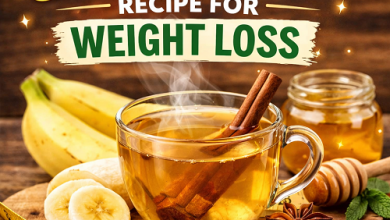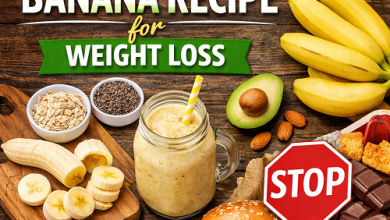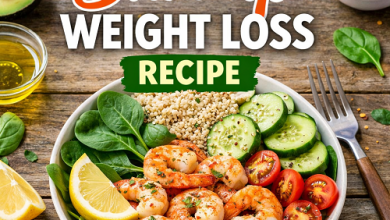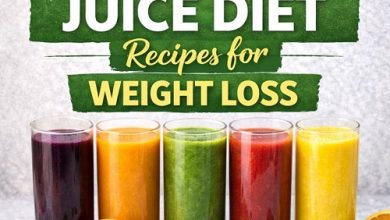How America Got Obsessed With Protein: The Rise of a Modern Food Craze
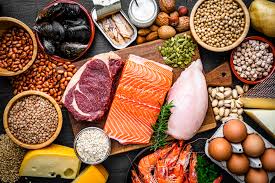
Protein has become the superstar of the American diet. From protein shakes and protein bars to cereals, coffee creamers, and even chips boasting added grams of protein, it’s hard to walk through a grocery store without seeing the word plastered in bold across packaging. Fitness enthusiasts tout it as the key to muscle growth, weight loss influencers swear by it for satiety, and food companies leverage it as a marketing goldmine. But this fascination didn’t happen overnight. The story of how America got obsessed with protein is rooted in a mix of science, marketing, cultural shifts, and evolving health anxieties.
This article dives deep into the history, psychology, and economics behind America’s modern love affair with protein—exploring why it has become synonymous with health, how the craze took off, and where it might be heading next.
The Origins: Protein as the “Building Block of Life”
Protein is one of the three macronutrients—alongside carbohydrates and fats—that our bodies require for survival. Its role in repairing tissues, building muscle, supporting immune function, and producing enzymes is well documented. But for most of human history, protein wasn’t romanticized—it was simply part of food.
The word itself comes from the Greek proteios, meaning “primary” or “of first importance.” Early scientists in the 19th century, such as Dutch chemist Gerardus Mulder, believed protein to be the fundamental nutrient of life. By the early 20th century, nutritionists promoted meat, eggs, and milk as essential sources of strength and vitality, particularly for the growing industrial workforce. Campaigns like “Drink Milk for Strength” or the beef industry’s push for red meat reinforced the cultural idea that protein meant power.
Still, protein remained largely in the background of nutrition conversations—an important part of food but not a fixation. That would begin to change after World War II.
Post-War Abundance and the Seeds of a Craze
After World War II, the American food landscape transformed. Industrial agriculture and food technology produced an abundance of meat, dairy, and processed goods. Protein-rich foods became symbols of prosperity and modern living.
At the same time, nutrition research gained traction. Scientists confirmed protein’s role in growth and muscle development, and high-protein diets were popularized for athletes and soldiers. The Cold War era, with its focus on strength and national fitness, only reinforced protein as a nutrient of superiority. School lunch programs emphasized milk and meat, cementing protein as essential for “growing strong.”
Yet, in the 1970s and 1980s, a new dietary villain stole the spotlight: fat. Low-fat products became the trend, and carbohydrates took center stage as fillers. Protein wasn’t demonized, but it wasn’t yet the celebrity nutrient it would soon become.
The Atkins Effect: When Protein Took the Stage
The late 1990s and early 2000s marked a turning point. Dr. Robert Atkins, a cardiologist, published Dr. Atkins’ Diet Revolution in the 1970s, but it was the 1992 revival of his book that catapulted low-carb diet meals, high-protein eating into the mainstream. By encouraging Americans to cut carbs and load up on protein and fat, the Atkins Diet challenged decades of low-fat dogma.
The results were striking: dieters reported rapid weight loss, while restaurants and food companies rushed to adapt. Suddenly, “low-carb” menus appeared at fast-food chains, and “high-protein” was stamped on everything from shakes to frozen meals. Though nutritionists debated the safety of Atkins’ approach, the cultural shift was undeniable—protein was now linked directly to slimness and health.
This period planted the seeds of today’s obsession. For the first time, protein wasn’t just essential—it was trendy.
The Fitness Industry’s Role: Protein as a Lifestyle
The explosion of gym culture, bodybuilding, and fitness influencers has been instrumental in how America got obsessed with protein. Beginning in the 1980s with figures like Arnold Schwarzenegger, the idea of sculpting a muscular physique became aspirational. Protein powders, once niche supplements for bodybuilders, entered mainstream markets.
By the 2010s, with the rise of CrossFit, Instagram fitness models, and YouTube workout gurus, protein had become a non-negotiable part of “clean eating.” Gym-goers tracked macros (proteins, carbs, fats), and a cultural mantra emerged: eat protein after every workout to “fuel your gains.” Even casual exercisers began to see protein not just as food, but as a performance enhancer.
This lifestyle branding has been wildly effective. Today, grabbing a protein bar isn’t just about eating—it’s about signaling health, discipline, and ambition.
Food Industry Marketing: The Protein Boom
The food industry saw an opportunity and ran with it. Between 2010 and 2020, the number of new food and beverage products claiming to be “high in protein” skyrocketed. Protein branding extended beyond shakes and powders into:
- Protein-packed snacks: Chips, popcorn, cookies, and brownies.
- Protein breakfast foods: Cereals, oatmeal, yogurt, and pancake mixes.
- Protein beverages: Coffee with added protein, kombucha with protein, even water labeled as protein-infused.
- Plant-based protein products: Beyond Meat, Impossible Burger, and pea protein powder.
Why the explosion? Because “protein” sells. Unlike carbs (often vilified) or fat (historically demonized), protein carries no negative baggage. In consumer psychology, the word instantly conveys strength, satiety, health, and progress. Companies discovered that slapping “10g protein” on packaging could boost sales—even when consumers were already getting enough protein in their diets.
The Science (and Misconceptions) Behind the Craze
Here’s where things get interesting. The average American already consumes more protein than the recommended dietary allowance (RDA). According to the National Health and Nutrition Examination Survey (NHANES), most adults consume about 90–100 grams of protein daily—well above the RDA of 46 grams for women and 56 grams for men.
So why the obsession?
- Satiety Factor
Protein does make people feel fuller longer than carbs or fats. This has made it central to weight loss programs. - Muscle Growth
Strength training requires adequate protein, and studies confirm its importance for muscle repair. But many gym-goers far exceed the optimal intake, assuming “more is better.” - Healthy Halo Effect
Food labeled “high protein” is often perceived as healthier overall, even when loaded with sugar or artificial ingredients. - Fear of Carbs
With decades of diet fads demonizing carbohydrates, protein emerged as the safe, “good” macronutrient.
Yet, experts caution that excessive protein may have downsides, including kidney strain in vulnerable populations, digestive issues, and potential displacement of other important nutrients (like fiber from plants). The obsession, they argue, may be less about health and more about perception.
Cultural Drivers: Why Protein Resonates With Americans
America’s protein craze can’t be understood through science alone. It taps into deep cultural themes:
- Productivity & Hustle Culture: Protein is framed as fuel—efficient, powerful, and performance-driven. It aligns with the American ethos of working harder, moving faster, and achieving more.
- Body Image Pressures: Protein consumption is tied to the pursuit of muscular, toned, or lean physiques—standards reinforced by social media.
- Masculinity & Power: Historically, meat (a primary protein source) has been linked to masculinity. Even today, advertising often depicts men grilling steaks or downing protein shakes as symbols of strength.
- Individualism: High-protein diets emphasize control, discipline, and self-optimization—values woven into the American narrative.
In other words, protein has become more than a nutrient—it’s a cultural icon.
The Plant-Based Protein Revolution
Interestingly, the protein obsession has also fueled the rise of plant-based diets. As more Americans reduce meat for health, ethical, or environmental reasons, companies have rushed to offer alternatives. Soy, pea, hemp, and even insect protein are marketed as sustainable solutions to the protein demand.
The Beyond Meat and Impossible Burger boom is a testament to this. These products don’t just promise meat alternatives—they promise equivalent protein. The reassurance of “20 grams of protein per patty” helps consumers transition without fear of deficiency.
Thus, the craze has evolved: it’s no longer about animal protein versus plant protein—it’s about ensuring you get enough protein, regardless of the source.
Protein and the Weight Loss Industry
Diet culture has continually reinvented itself, and protein has become the anchor of many modern weight-loss strategies. From Keto (high protein, high fat, low carb) to Paleo (meat-centric eating) to intermittent fasting (often paired with high-protein meals), protein plays the starring role.
Even meal delivery services and weight-loss apps emphasize protein targets, framing it as the nutrient that ensures results. This reinforces consumer behavior: eat protein to lose fat, build muscle, and transform your body.
Where Do We Go From Here? The Future of Protein
The American protein obsession shows no signs of slowing down. In fact, it’s likely to intensify with new trends:
- Personalized nutrition: Apps and wearable tech that track individual protein needs.
- Alternative proteins: Lab-grown meat, fungi-based proteins, and algae products.
- Functional foods: Protein combined with probiotics, vitamins, or adaptogens for “total wellness.”
- Senior health: As aging populations worry about muscle loss, protein will be marketed heavily toward older adults.
But the challenge remains: helping consumers distinguish between genuine health benefits and clever marketing.
Conclusion:
The journey of how America got obsessed with protein is a fascinating reflection of culture, commerce, and science. From humble beginnings as a vital macronutrient, protein has been elevated into a symbol of strength, health, and discipline. Along the way, it has been shaped by post-war abundance, the Atkins revolution, the fitness industry, and relentless food marketing.
Today, protein isn’t just food—it’s a lifestyle. But as with any craze, balance is key. While protein is essential, the obsession sometimes overshadows other aspects of nutrition, like fiber, healthy eating, and diverse plant foods. Understanding the cultural forces behind the craze can help Americans make smarter, more informed choices—ones that go beyond buzzwords and back to genuine health.

